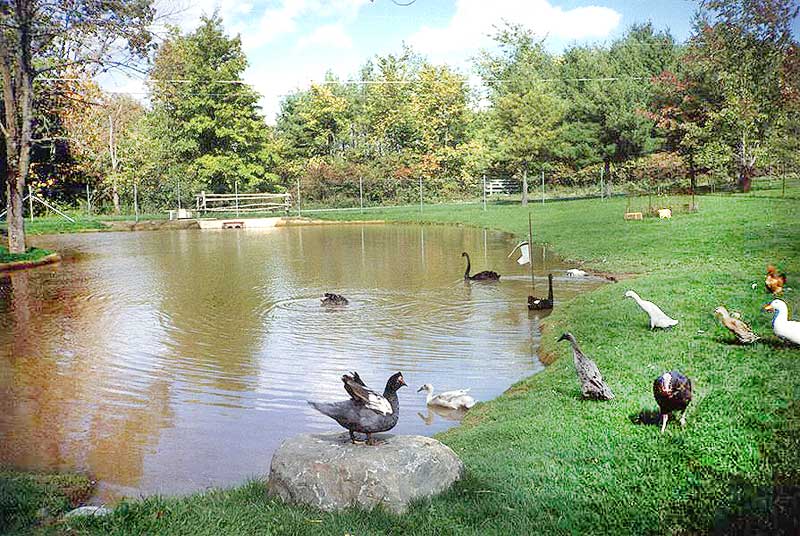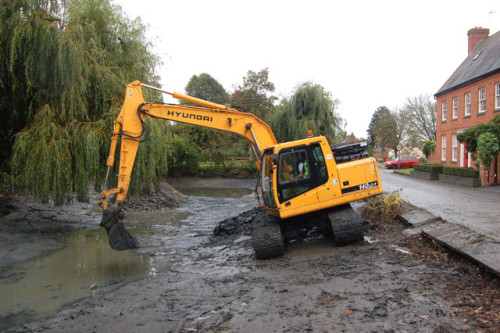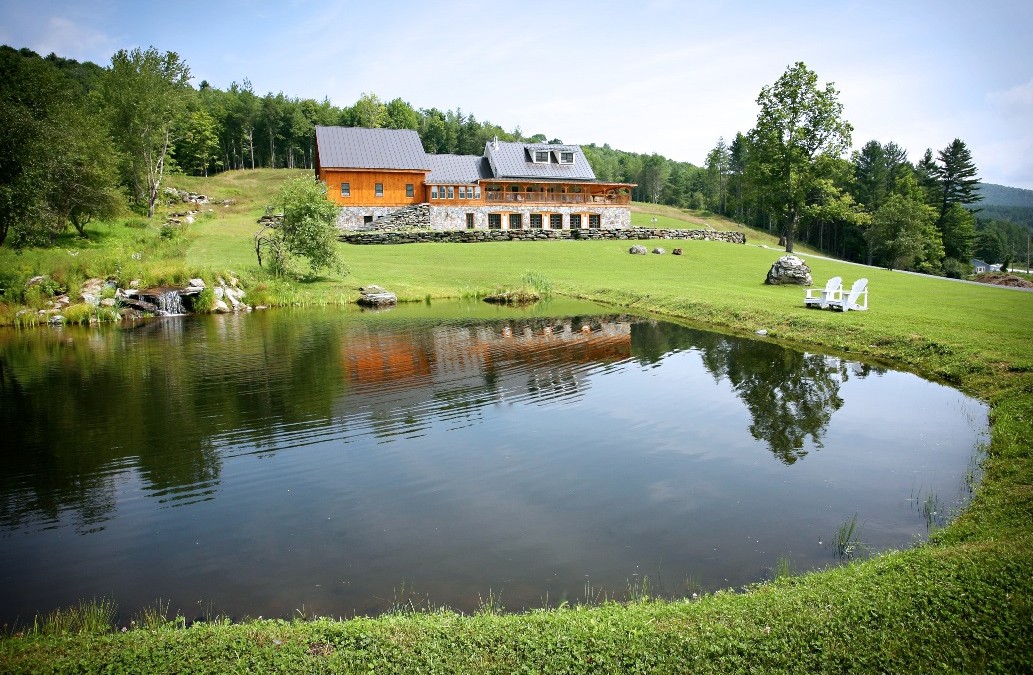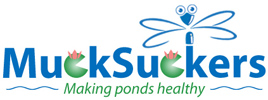
by John Monahan | May 18, 2015 | Dredging, Pond Maintenance
The conventional way of dredging a pond is a very messy task. This usually involves first draining the pond, then allowing time for the sediment to dry. All wildlife is either killed off or relocated during this aspect of the operation.
Heavy equipment is then used to scrape the bottom of the pond. Dump trucks then haul away the sloppy sludge material. This process not only destroys the pond’s wildlife but also the entire landscape around the pond.

Conventional dredging where a pond is mostly dried out first. As you can see, the heavy equipment can easily damage the surrounding area.
After the conventional dredging is done, all banks will then need to be restored, trees and grass or other landscaping and will need to be replaced or reseeded. In many cases conventional dredging will not work. Sometimes ponds are “spring fed” and never dry out completely. Other ponds are completely surrounded by houses, trees, power lines, etc, leaving pond owners no option to use heavy equipment.

Another method of dredging involving heavy equipment on a barge. It’s better than the first method but can still damage the environment and pond liners. Plus it’s time consuming, awkward and costly.
Another option to pond dredging is the Sediment Removal Solutions of Ohio approach.
SRS uses scuba divers and high-volume suction pumps to suction the sediment out without the harmful repercussions of conventional dredging. The sediment is simply pumped to another location, either allowed to be absorbed into the surrounding landscape or contained within a geotextile container. This container passively filters out the water allowing the sediment to completely dry. This material can be hauled away usually at a fraction of the cost of hauling wet material.
The SRS of Ohio approach to restoring ponds is environmentally friendly, far less invasive, and leaves little to no ecological footprint behind unlike commercial dredging. It’s a great alternative to traditional dredging techniques.
Contact us today with any pond dredging related questions you have!
Call us (1-877-772-MUCK) or email us!

by John Monahan | May 6, 2015 | Dredging, Pond Maintenance
Dredging a pond is a damaging process. All water and all wildlife must be removed before the heavy equipment is brought in – and heavy equipment means felled trees and tattered shorelines.
Essentially, dredging is like saying goodbye to (or at best relocating) your wildlife, and then rebuilding the landscape after all the trucks have left the site. Surely, it’s a last-gasp choice to clean or save a pond. Surely, there’s a better way.
There is.
Sediment Removal Solutions of Ohio (SRS) employs scuba divers to avoid the wear and tear of conventional dredging. The divers use high volume suction pumps to remove the sediment from the bottom of the pond. The sediment is sent to another location, where it can be contained in a geotextile container, or simply absorbed into the land. (A geotextile container will allow the water to slowly drain away, so that the remaining sediment can be hauled away as a much lighter, and much more inexpensive load.)
With this system, no wildlife needs to be relocated. It leaves the surrounding environment virtually unscathed. The results are fantastic, too: with proper upkeep, a cleaning of this sort should last from 15-20 years.

The grounds surrounding a pond are often pristine, and difficult to bring back if damaged. (Photo courtesy of sedimentremovalsolutions.com)
Here are some added benefits, from the main SRS website:
- The restoration of the natural bottom without disturbing existing aquatic life in your pond.
- Cleaner water and a healthier ecosystem without damage to the existing landscape.
- A dramatic reduction of weed and algae problems.
- An expanded living space for your fish at a cost up to 75% less than dredging.
- A reduction in toxic gases and nutrients.
The cost of this service is dependant on the size of the pond and the amount of sediment. SRS utilizes daily rates, and these can be obtained through request. Meanwhile, the cost of dredging can mean so much more. Again, from the main SRS website:
“The average cost (for mechanical excavation) is around $75,000 per acre. To dragline wet, remember the sediment is in a soft liquid state. When the bucket hits the sediment, the sediment explodes in the water, saturating the entire water column, (like a spoon stirring chocolate in milk.) Yes, you will have a deeper pond, because they can remove the hard clays and soils at the bottom when they dig. But when they are finished and the pond settles, you are right back where you started.”
When it comes time to dredge, it’s good to know that there are options out there. SRS affords its customers a less damaging and more environmentally sound alternative to old fashioned dredging.





